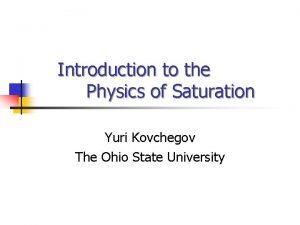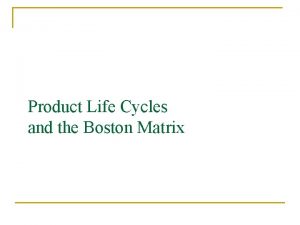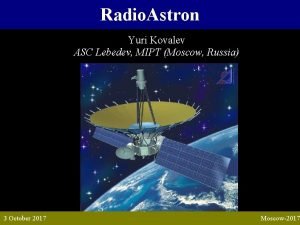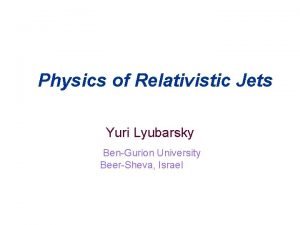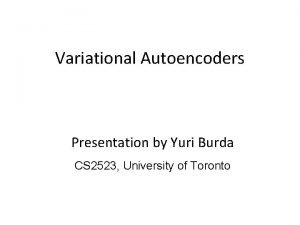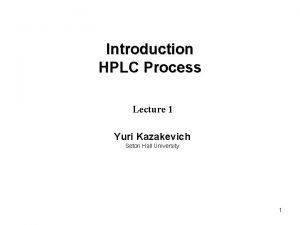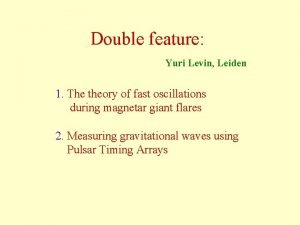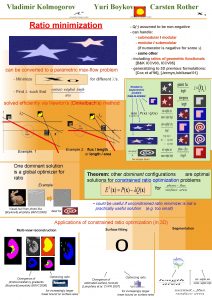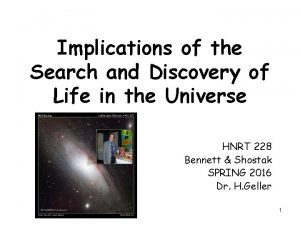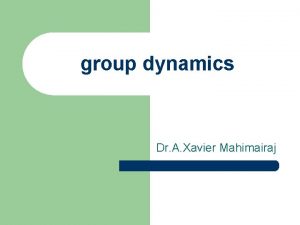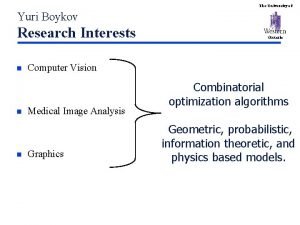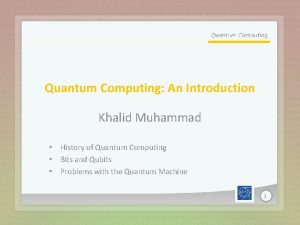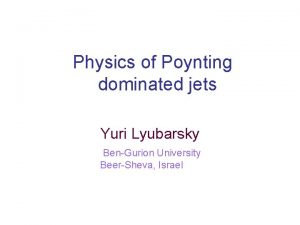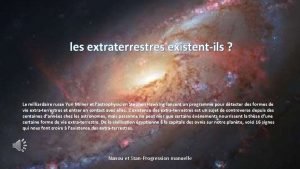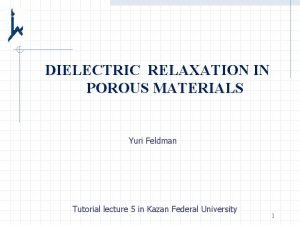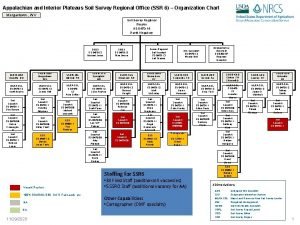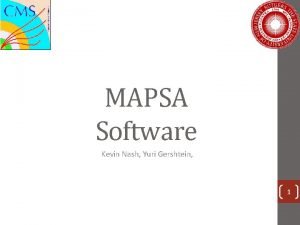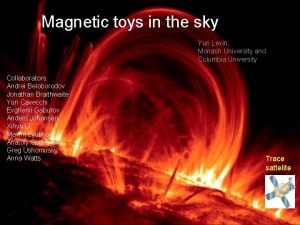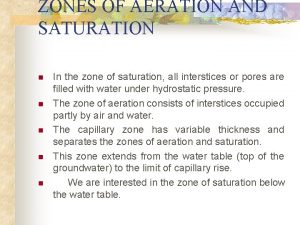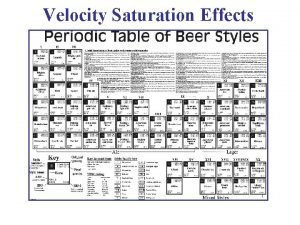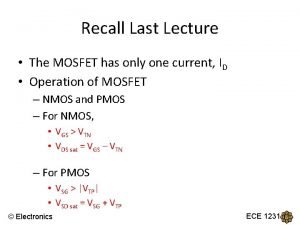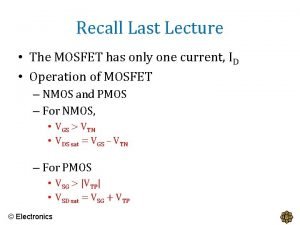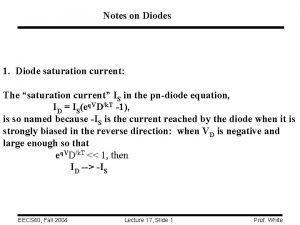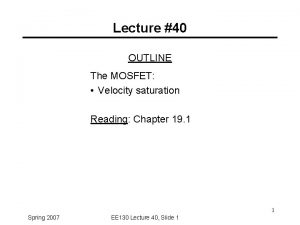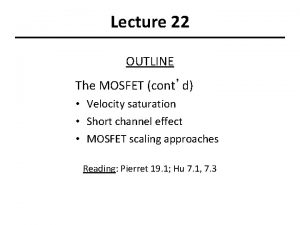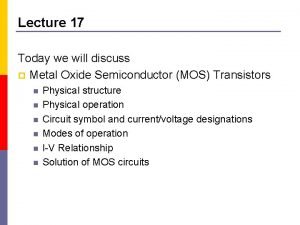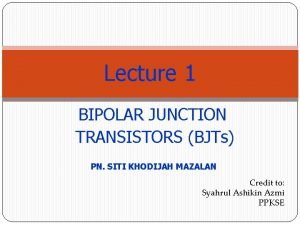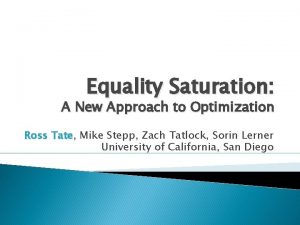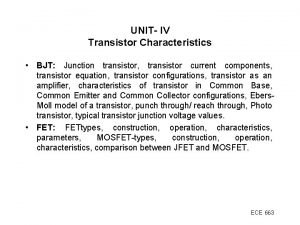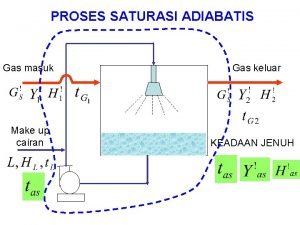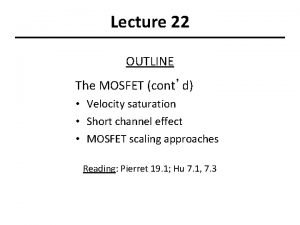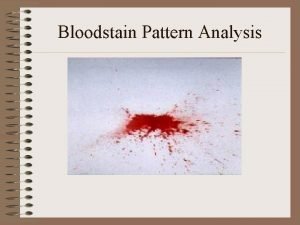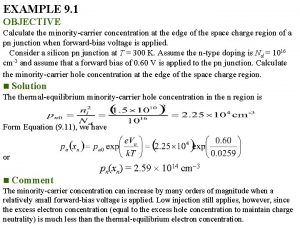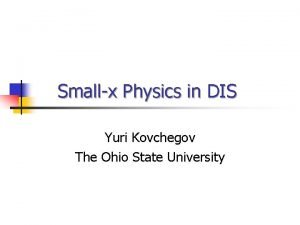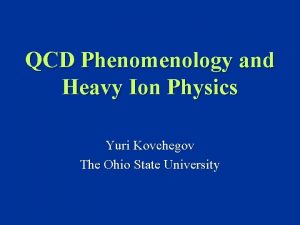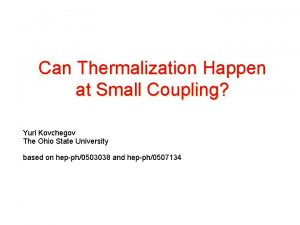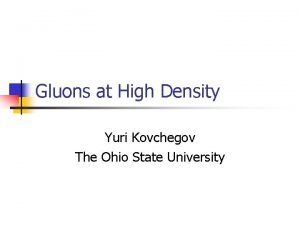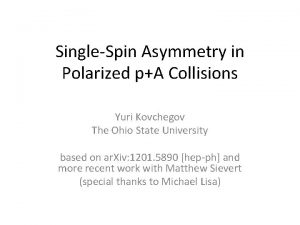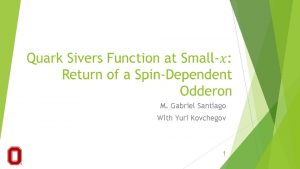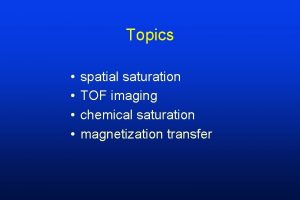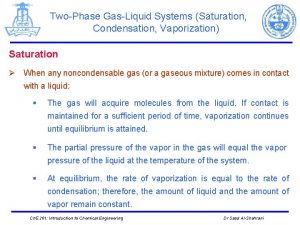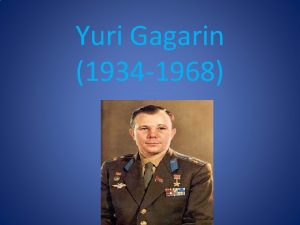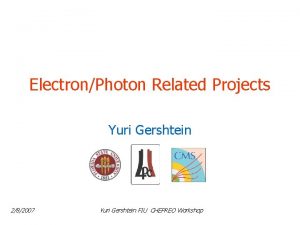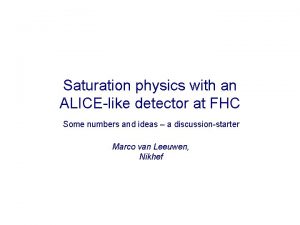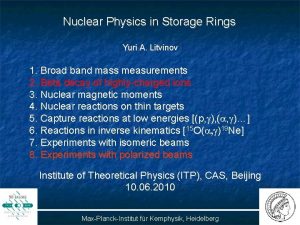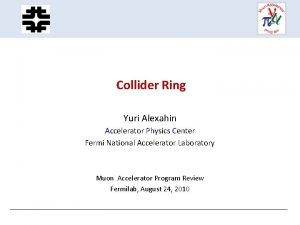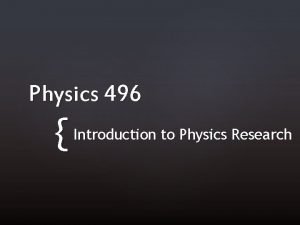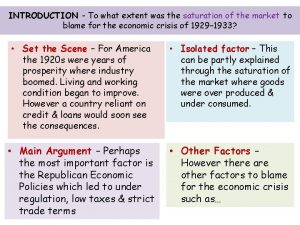Introduction to the Physics of Saturation Yuri Kovchegov

























































- Slides: 57

Introduction to the Physics of Saturation Yuri Kovchegov The Ohio State University

Outline n n Preamble Review of saturation physics/CGC. n n n More recent progress at small-x n n n Classical fields Quantum evolution Running coupling corrections NLO BFKL/BK/JIMWLK corrections Conclusions

Preamble

Running of QCD Coupling Constant QCD coupling constant changes with the momentum scale involved in the interaction Asymptotic Freedom! Gross and Wilczek, Politzer, ca ‘ 73 Physics Nobel Prize 2004! For short distances x < 0. 2 fm, or, equivalently, large momenta k > 1 Ge. V the QCD coupling is small and interactions are weak.

A Question n Can we understand, qualitatively or even quantitatively, the structure of hadrons and their interactions in High Energy Collisions? n n What are the total cross sections? What are the multiplicities and production cross sections? Diffractive cross sections. Particle correlations.

What sets the scale of running QCD coupling in high energy collisions? n “String theorist”: (not even wrong) n Pessimist: we simply can not tackle high energy scattering in QCD. n p. QCD expert: only study high-p. T particles such that But: what about total cross section? bulk of particles?

What sets the scale of running QCD coupling in high energy collisions? n Saturation physics is based on the existence of a large internal mometum scale QS which grows with both energy s and nuclear atomic number A such that and we can calculate total cross sections, particle spectra and multiplicities, etc from first principles.

Classical Fields

Mc. Lerran-Venugopalan Model ¡ ¡ The wave function of a single nucleus has many small -x quarks and gluons in it. In the transverse plane the nucleus is densely packed with gluons and quarks. Large occupation number Classical Field

Mc. Lerran-Venugopalan Model ¡ ¡ Large parton density gives a large momentum scale Qs (the saturation scale). For Qs >> LQCD, get a theory at weak coupling and the leading gluon field is classical. Mc. Lerran, Venugopalan ’ 93 -’ 94

Mc. Lerran-Venugopalan Model o To find the classical gluon field Aμ of the nucleus one has to solve the non-linear analogue of Maxwell equations – the Yang-Mills equations, with the nucleus as a source of the color charge: Yu. K. ’ 96; J. Jalilian-Marian et al, ‘ 96

Classical Field of a Nucleus Here’s one of the diagrams showing the non-Abelian gluon field of a large nucleus. The resummation parameter is a. S 2 A 1/3 , corresponding to two gluons per nucleon approximation.

Classical Gluon Distribution A good object to plot is the classical gluon distribution multiplied by the phase space k. T: Most gluons in the nuclear wave function have transverse momentum of the order of k. T ~ QS and We have a small coupling description of the whole wave function in the classical approximation.

Classical Gluon Production in Proton-Nucleus Collisions (p. A) To find the gluon production cross section in p. A one has to solve the same classical Yang-Mills equations for two sources – proton and nucleus. A. H. Mueller, Yu. K. , ’ 98; B. Kopeliovich, A. Tarasov and A. Schafer, ’ 98; A. Dumitru, L. Mc. Lerran ’ 01.

CGC in p. A: the diagrams ¡ Again classical gluon fields correspond to tree-level (no loops) gluon production diagrams: proton nucleons in the nucleus

Classical gluon field in p. A: Cronin effect ¡ Classical CGC gluon production in p. A lead to Cronin effect: Enhancement (Cronin Effect) p. T / Q S Multiple rescatterings -> p. T boradening.

Heavy Ion Collisions in CGC: Classical Gluon Field nucleus ¡ ¡ nucleus To construct initial conditions for quark-gluon plasma formation in Mc. Lerran-Venugopalan model one has to find the classical gluon field left behind by the colliding nuclei. No analytical solution exists. Perturbative calculations by Kovner, Mc. Lerran, Weigert; Rischke, Yu. K. ; Gyulassy, Mc. Lerran; Balitsky. Numerical simulations by Krasnitz, Nara and Venugopalan, and by Lappi, and an analytical ansatz by Yu. K for full solution.

Quantum Evolution

Why Evolve? n n n No energy or rapidity dependence in classical field and resulting cross sections. Energy/rapidity-dependence comes in through quantum corrections. Quantum corrections are included through “evolution equations”.

BFKL Equation Balitsky, Fadin, Kuraev, Lipatov ‘ 78 Start with N particles in the proton’s wave function. As we increase the energy a new particle can be emitted by either one of the N particles. The number of newly emitted particles is proportional to N. The BFKL equation for the number of partons N reads:

BFKL Equation as a High Density Machine v increases BFKLrise evolution produces more partons , roughly of v As Butenergy can parton densities forever? Can gluon fields be infinitely the same. Can size. partons overlap each other creating areas of very strong? the. The cross sections rise forever? high density. v No! There exists a black disk limit for cross sections, which we know from v Number of partons along withoncorresponding cross sections Quantumdensity Mechanics: for a , scattering a disk of radius R the total cross grows power ofbyenergy sectionas is abounded

Nonlinear Equation At very high energy parton recombination becomes important. Partons not only split into more partons, but also recombine. Recombination reduces the number of partons in the wave function. Number of parton pairs ~ Yu. K. ’ 99 (large NC QCD) I. Balitsky ’ 96 (effective lagrangian)

Nonlinear Equation: Saturation Black Disk Limit Gluon recombination tries to reduce the number of gluons in the wave function. At very high energy recombination begins to compensate gluon splitting. Gluon density reaches a limit and does not grow anymore. So do total DIS cross sections. Unitarity is restored!

Nonlinear Evolution at Work Proton ü First partons are produced overlapping each other, all of them about the same size. ü When some critical density is reached no more partons of given size can fit in the wave function. The proton starts producing smaller partons to fit them in. Color Glass Condensate

Map of High Energy QCD energy size of gluons

Map of High Energy QCD Saturation physics allows us to study regions of high parton density in the small coupling regime, where calculations are still under control! (or p. T 2) Transition to saturation region is characterized by the saturation scale

Going Beyond Large NC: JIMWLK To do calculations beyond the large-NC limit on has to use a functional integro-differential equation written by Iancu, Jalilian-Marian, Kovner, Leonidov, Mc. Lerran and Weigert (JIMWLK): where the functional Z[r] can then be used for obtaining wave function-averaged observables (like Wilson loops for DIS):

Going Beyond Large NC: JIMWLK n n n The JIMWLK equation has been solved on the lattice by K. Rummukainen and H. Weigert For the dipole amplitude N(x 0, x 1, Y), the relative corrections to the large-NC limit BK equation are < 0. 001 ! Not the naïve 1/NC 2 ~ 0. 1 ! The reason for that is dynamical, and is largely due to saturation effects suppressing the bulk of the potential 1/NC 2 corrections (Yu. K. , J. Kuokkanen, K. Rummukainen, H. Weigert, ‘ 08).

BFKL Equation In the conventional Feynman diagram picture the BFKL equation can be represented by a ladder graph shown here. Each rung of the ladder brings in a power of a ln s. The resulting dipole amplitude grows as a power of energy violating Froissart unitarity bound

GLR-MQ Equation Gribov, Levin and Ryskin (‘ 81) proposed summing up “fan” diagrams: Mueller and Qiu (’ 85) summed “fan” diagrams for large Q 2. The GLR-MQ equation reads: GLR-MQ equation has the same principle of recombination as BK and JIMWLK. GLR-MQ equation was thought about as the first non-linear correction to the linear BFKL evolution. BK/JIMWLK derivation showed that there are no more terms in the large-NC limit and obtained the correct kernel for the non-linear term (compared to GLR suggestion).

Geometric Scaling n One of the predictions of the JIMWLK/BK evolution equations is geometric scaling: DIS cross section should be a function of one parameter: (Levin, Tuchin ’ 99; Iancu, Itakura, Mc. Lerran ’ 02)

Geometric Scaling in DIS Geometric scaling has been observed in DIS data by Stasto, Golec-Biernat, Kwiecinski in ’ 00. Here they plot the total DIS cross section, which is a function of 2 variables - Q 2 and x, as a function of just one variable:

Map of High Energy QCD QS QS kgeom ~ QS 2 / QS 0 p T 2

Quantum Evolution and Particle Production To understand the energy dependence of particle production in p. A one needs to include quantum evolution resumming graphs like this one. It resums powers of a ln 1/x = a Y. (Yu. K. , K. Tuchin, ’ 01)

Gluon Production in p. A: BK Evolution Rp. A Including quantum corrections to gluon production cross section in p. A using BK/JIMWLK evolution equations introduces suppression in Rp. A with increasing energy! Energy Increases k / QS The plot is from D. Kharzeev, Yu. K. , K. Tuchin ’ 03 (see also Kharzeev, Levin, Mc. Lerran, ’ 02 – original prediction, Albacete, Armesto, Kovner, Salgado, Wiedemann, ’ 03)

Rd. Au at different rapidities Rd. Au RCP – central to peripheral ratio The data from BRAHMS Collaboration nucl-ex/0403005 Our prediction of suppression seems to be confirmed! (indeed quarks have to be included too to describe the data)

Rd+Au at forward and backward rapidities PHENIX data, nucl-ex/0411054

More Recent Data Recent STAR data shows even stronger suppression at rapidity of 4. 0, strengthening the case for CGC. (figure from nucl-ex/0602011)

Recent Progress

A. Running Coupling

DIS in the Classical Approximation The DIS process in the rest frame of the target is shown below. It factorizes into with rapidity Y=ln(1/x)

DIS in the Classical Approximation The dipole-nucleus amplitude in the classical approximation is A. H. Mueller, ‘ 90 Black disk limit, Color transparency 1/QS

Quantum Evolution As energy increases the higher Fock states including gluons on top of the quark-antiquark pair become important. They generate a cascade of gluons. These extra gluons bring in powers of a. S ln s, such that when a. S << 1 and ln s >>1 this parameter is a. S ln s ~ 1.

Resumming Gluonic Cascade In the large-NC limit of QCD the gluon corrections become color dipoles. Gluon cascade becomes a dipole cascade. A. H. Mueller, ’ 93 -’ 94 We need to resum dipole cascade, with each final state dipole interacting with the target. Yu. K. ‘ 99

Nonlinear Evolution Equation Defining rapidity Y=ln s we can resum the dipole cascade I. Balitsky, ’ 96, HE effective lagrangian Yu. K. , ’ 99, large NC QCD initial condition Linear part is BFKL, quadratic term brings in damping

What Sets the Scale for the Running Coupling? 1 transverse plane 0 2

What Sets the Scale for the Running Coupling? In order to perform consistent calculations it is important to know the scale of the running coupling constant in the evolution equation. There are three possible scales – the sizes of the “parent” dipole and “daughter” dipoles. Which one is it?

Preview Ø The answer is that the running coupling corrections come in as a “triumvirate” of couplings (H. Weigert, Yu. K. ’ 06; I. Balitsky, ‘ 06): cf. Braun ’ 94, Levin ‘ 94 Ø The scales of three couplings are somewhat involved.

Results: Transverse Momentum Space The resulting JIMWLK kernel with running coupling corrections is where The BK kernel is obtained from the above by summing over all possible emissions of the gluon off the quark and anti-quark lines. q q’

Running Coupling BK Here’s the BK equation with the running coupling corrections (H. Weigert, Yu. K. ’ 06; I. Balitsky, ‘ 06): where

Solution of the Full Equation Different curves – different ways of separating running coupling from NLO corrections. Solid curve includes all corrections. J. Albacete, Yu. K. ‘ 07

Geometric Scaling At high enough rapidity we recover geometric scaling, all solutions fall on the same curve. This has been known for fixed coupling: however, the shape of the scaling function is different in the running coupling case! J. Albacete, Yu. K. ‘ 07

B. NLO BFKL/BK/JIMWLK

BFKL with Running Coupling We can also write down an expression for the BFKL equation with running coupling corrections (H. Weigert, Yu. K. ‘ 06): n cf. Braun ’ 94, Levin ‘ 94

NLO BK/JIMWLK Evolution n n NLO BK/JIMWLK was calculated by Balitsky and Chrilli ’ 07 The answer is simple:

NLO BK/JIMWLK n It is known that NLO BFKL corrections are numerically large. n Could it be that saturation effects make NLO BK/JIMWLK corrections small?

Conclusions n n CGC/saturation physics tries to address fundamental and profound questions in strong interactions which have been around for over 40 years, longer than QCD itself. In recent decades small-x physics made significant theoretical progress: nonlinear BK and JIMWLK evolution equations have been written down which unitarize BFKL equation. Quasiclassical MV model was developed. Recent years saw much progress: running coupling corrections were found for small-x evolution equations: BFKL, BK and JIMWLK. NLO corrections to BK and JIMWLK have been calculated as well. CGC/saturation physics has enjoyed phenomenological success in describing DIS at HERA and RHIC d+Au and A+A data.
 Yuri kovchegov
Yuri kovchegov Boston matrix product life cycle
Boston matrix product life cycle Yuri klapouh artist
Yuri klapouh artist Yuri gorbachev paintings
Yuri gorbachev paintings Yuri kovalev
Yuri kovalev Yuri lyubarsky
Yuri lyubarsky Armen yuri gasparyan
Armen yuri gasparyan Yuri armstrong
Yuri armstrong Yuri burda
Yuri burda Yuri kazakevich
Yuri kazakevich Pulsar timing
Pulsar timing Vladimir kolmogorov
Vladimir kolmogorov Knozorov
Knozorov Dr yuri levin
Dr yuri levin What is excel yuri
What is excel yuri Choose the right word
Choose the right word Yuri boykov
Yuri boykov Yuri manin
Yuri manin Yuri lyubarsky
Yuri lyubarsky Yuri milner
Yuri milner Yuri
Yuri Yuri plowden
Yuri plowden Yuri bezmenov quotes
Yuri bezmenov quotes Yuri gershtein
Yuri gershtein Yuri levin columbia
Yuri levin columbia Yuri krotov
Yuri krotov Yuri garigan
Yuri garigan Zone of aeration and saturation
Zone of aeration and saturation What is the zone of saturation
What is the zone of saturation What is velocity saturation
What is velocity saturation Effective green time
Effective green time Contoh tabel populasi dan sampel penelitian
Contoh tabel populasi dan sampel penelitian Subcooling and superheat formula
Subcooling and superheat formula Mosfet dc circuit analysis
Mosfet dc circuit analysis Pmos saturation current equation
Pmos saturation current equation Logistic curve method example
Logistic curve method example Saturation normal
Saturation normal Diode saturation current
Diode saturation current Vdssat
Vdssat Vdsat mosfet
Vdsat mosfet _
_ Determine ib ic ie vbe vce in the circuit below βdc=150
Determine ib ic ie vbe vce in the circuit below βdc=150 Saturation azote plongée
Saturation azote plongée Transferrin saturation
Transferrin saturation Water table chart
Water table chart Zone of aeration and zone of saturation
Zone of aeration and zone of saturation Equality saturation
Equality saturation N bjt
N bjt Dc analysis of transistor circuits
Dc analysis of transistor circuits Ascorbic acid saturation test
Ascorbic acid saturation test Unit of transistor
Unit of transistor Bjt cutoff saturation active
Bjt cutoff saturation active What is task saturation
What is task saturation Adiabatic saturation temperature
Adiabatic saturation temperature Velocity saturation
Velocity saturation Active region and saturation region
Active region and saturation region Wipe pattern blood
Wipe pattern blood Diode current equation
Diode current equation
